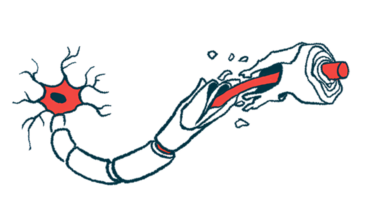Secondary progressive MS found to start later, move slower than PPMS
Patients with either MS type become wheelchair-dependent at similar ages: study

People with secondary progressive multiple sclerosis (SPMS) seem to experience slower worsening of their disabilities than those with the primary progressive form of the disease (PPMS), a new study reports.
However, SPMS patients tend to be older and have more advanced disability when they enter the progressive stage of the disease. As a consequence of these patterns, people with SPMS and PPMS tend to reach milestones like needing a wheelchair at similar ages.
“Relative to PPMS, the progressive phase in SPMS begins at older ages, but with greater baseline disability due to the preceding relapsing-remitting phase,” researchers wrote.
“Patients with SPMS then experience slower disability accrual than those with PPMS, ultimately yielding convergent disability trajectories, with similar ages at more severe disability milestones in the two phenotypes [observable characteristics],” they added.
The study, “Disability accrual in primary and secondary progressive multiple sclerosis,” was published in the Journal of Neurology, Neurosurgery & Psychiatry.
Most MS patients initially diagnosed with relapsing-remitting form of MS
Most people with multiple sclerosis will initially be diagnosed with the relapsing-remitting form of the disease, which is marked by relapses where symptoms worsen and periods of remission where they ease. Over time, these patients may progress to SPMS, which is marked by symptoms gradually worsening over time independent of relapse activity.
On the other hand, about one in 10 MS patients will have PPMS, where symptoms worsen gradually over time immediately from disease onset (with or without relapse activity).
While SPMS and PPMS are both forms of multiple sclerosis characterized by progressively worsening symptoms, it hasn’t been clear how the two disease types tend to differ in terms of how quickly disability worsens.
To know more, an international team of researchers examined data from patients included in the MSBase registry, an international database that has been monitoring outcomes for MS patients at centers around the world since 2004.
Their analysis included data for 1,872 patients with PPMS and 2,575 with SPMS, followed at more than 100 centers across 33 countries. Among the PPMS patients, 47% were men and 50% had relapse activity; among those with SPMS, 32% were men and 40% had relapses.
Of note, less than half (44%) of the SPMS patients had a recorded physician’s diagnosis for this disease type — instead, most patients in this analysis were operationally diagnosed, meaning they had a recorded diagnosis of relapsing-onset MS but clinical records suggested they had started experiencing disability progression independent of relapse activity.
Patients who reached wheelchair dependence did so at similar ages in PPMS and SPMS.
Patients with relapses tended to be younger at MS onset
The median age at onset of SPMS was significantly older than for PPMS (46.7 vs. 43.9 years). In both disease types, patients with relapse activity tended to be younger at disease onset than those without relapse activity.
“We observe older median age at onset of SPMS versus PPMS by approximately 2–4 years, whether SPMS onset is identified by operationalised or physician diagnosis,” the researchers wrote.
Statistical models showed that the rate of disability worsening, as measured by increases on the expanded disability status scale (EDSS), was significantly slower in SPMS patients compared to PPMS patients — by about 14% after adjusting for other differences between the groups.
When examining disease type and activity, SPMS patients with relapse activity had the slowest disability accrual, while PPMS patients with no relapses had the fastest accumulation of disability. The difference between the two was significant, but not between other forms.
“The time between EDSS milestones was longer in SPMS (particularly SPMS [with relapse activity]), reflecting slower disability accrual in this phenotype versus PPMS,” the researchers wrote.
However, models also showed that SPMS patients tended to have much more advanced disability when they entered the progressive stage of the disease, due to disability that accrued during the initial relapsing-remitting phase of the disease, which usually starts earlier than PPMS.
Comparisons of the age at which patients reached a score of 7 on the EDSS — meaning the person requires a wheelchair to get around — showed similar outcomes for SPMS and PPMS. In both groups, this disability milestone was reached in the early 60s among patients in the 25th percentile of disability progression (i.e., patients with generally more pronounced disability worsening).
Results were generally consistent when analyses were limited only to physician-diagnosed SPMS patients.
“Patients who reached wheelchair dependence did so at similar ages in PPMS and SPMS,” the researchers wrote.
The findings are consistent with the differences in age at onset and progression rates for both groups of patients. Collectively, the data suggest that PPMS patients tend to accrue disability more quickly than those with SPMS — but because SPMS patients usually have noteworthy disability already when they enter the progressive phase, people with either form of MS tend to be similar ages when they hit disability milestones.
This may have implications for designing clinical trials, the researchers noted. “One should exercise caution about [combining] PPMS and SPMS in clinical trials and consider the difference in disability trajectories when comparing disability outcomes,” they wrote.








